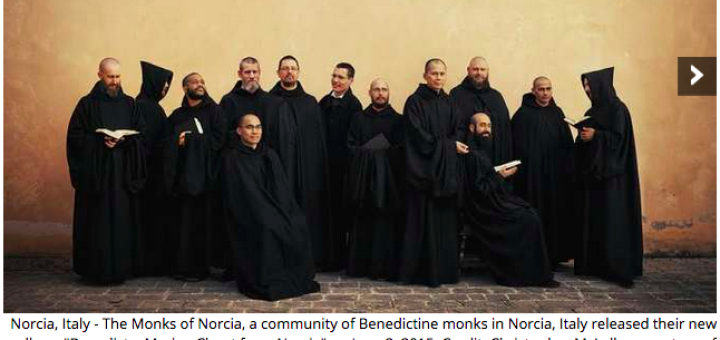

The Offertory originally consisted of a psalm and refrain, but by the 12th century only the refrain remained. The melody of the first line was repeated for the second line of the stanza, a new melody being given to the next stanza the music is syllabic. In its modern form the texts are sacred poems with double-line stanzas having the same accentuation and number of syllables for each two lines. The sequence flourished primarily from about the 9th century to the 16th. This chant is a descendant of synagogue music. The Tract replaces the Alleluia in penitential times. Its structure is somewhat like that of the Gradual. The Alleluia is of 4th-century Eastern origin. Later it became: opening melody (chorus)-psalm verse or verses in a virtuosically embellished psalmodic structure (soloist)-opening melody (chorus), repeated in whole or in part. The Gradual, introduced in the 4th century, also developed from a refrain between psalm verses. By the 9th century it had received its present form: refrain in a neumatic style-a psalm verse in psalm-tone style-refrain repeated.

The Introit is a processional chant that was originally a psalm with a refrain sung between verses. The Proper of the mass is composed of texts that vary for each mass in order to bring out the significance of each feast or season. The concluding Ite Missa Est and its substitute Benedicamus Domino usually use the melody of the opening Kyrie. The Agnus Dei was brought into the Latin mass from the Eastern Church in the 7th century and is basically in neumatic style. The Sanctus and Benedictus are probably from apostolic times. The melodies of the Credo, accepted into the mass about the 11th century, resemble psalm tones. The psalmodic recitation, i.e., using psalm tones, simple formulas for the intoned reciting of psalms, of early Glorias attests to their ancient origin. The chant of the Kyrie ranges from neumatic (patterns of one to four notes per syllable) to melismatic (unlimited notes per syllable) styles. The Ordinary of the mass includes those texts that remain the same for each mass. During the 8th and 9th centuries, a process of assimilation took place between Gallican and Gregorian chants and it is the chant in this evolved form that has come down to the present. Charlemagne, king of the Franks (768–814), imposed Gregorian chant on his kingdom, where another liturgical tradition-the Gallican chant-was in common use.

Gregory I, during whose papacy (590–604) it was collected and codified. Gregorian chant, monophonic, or unison, liturgical music of the Roman Catholic Church, used to accompany the text of the mass and the canonical hours, or divine office.
#Divine office chant how to#
COVID-19 Portal While this global health crisis continues to evolve, it can be useful to look to past pandemics to better understand how to respond today.Student Portal Britannica is the ultimate student resource for key school subjects like history, government, literature, and more.Demystified Videos In Demystified, Britannica has all the answers to your burning questions.This Time in History In these videos, find out what happened this month (or any month!) in history.#WTFact Videos In #WTFact Britannica shares some of the most bizarre facts we can find.Britannica Classics Check out these retro videos from Encyclopedia Britannica’s archives.Britannica Explains In these videos, Britannica explains a variety of topics and answers frequently asked questions.


 0 kommentar(er)
0 kommentar(er)
